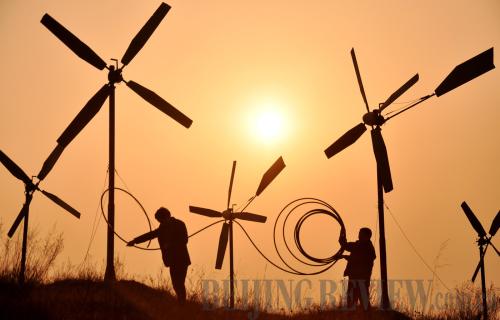|
 |
|
HI-TECH IRRIGATION: Tech-support staff examine wind power-backed irrigation facilities in Liushui Village, Yiyuan County, Shandong Province, on February 24 (ZHAO DONGSHAN) |
China-Russia Connection
The construction of a cross-border railway bridge linking China and Russia officially began on February 26 in Russia's far eastern Jewish Autonomous Oblast.
The 6,735-meter bridge will connect Tongjiang Port in northeast China's Heilongjiang Province with the Russian village of Nizhneleninskoye.
The bridge, designed with an annual passage capacity of 21 million tons, is expected to highly improve the transportation conditions of Tongjiang Port and offer a shortcut between China and Russia's Jewish Autonomous Oblast, Amur Oblast, Khabarovsk Krai, Magadan Oblast and Sakha (Yakut) Republic.
The construction is forecast to take two and a half years with an estimated total investment of 2.58 billion yuan ($422 million).
The China Railway Engineering Corp., the Heilongjiang Provincial Government, and the Far East & Baikal Region Development Fund Open Joint Stock Company are the project's investors.
Pipeline Opening-up
China has issued a plan to open up its largely monopolized oil and gas pipelines, in a bid to increase the facilities' efficiency, energy authority said on February 24.
The National Energy Administration (NEA) said in the plan that it encourages pipeline operators to open their facilities close to each other and to users, including fuel producers, refiners, sellers and other industrial users, when pipelines have extra capacity.
Pipeline operators are supposed to provide services including transport, storage, gasification, liquefaction and compression of crude oil, product oil and natural gas, at a price agreed upon by the two sides.
The plan involves both onshore and offshore pipelines, and the implementation of the plan will be supervised by the NEA.
The construction and operation of China's pipelines are largely dominated by major state-owned enterprises. In recent years, there has been a mounting call for the business to be opened up.
China has already begun taking measures to open up the whole oil and gas industry. | 